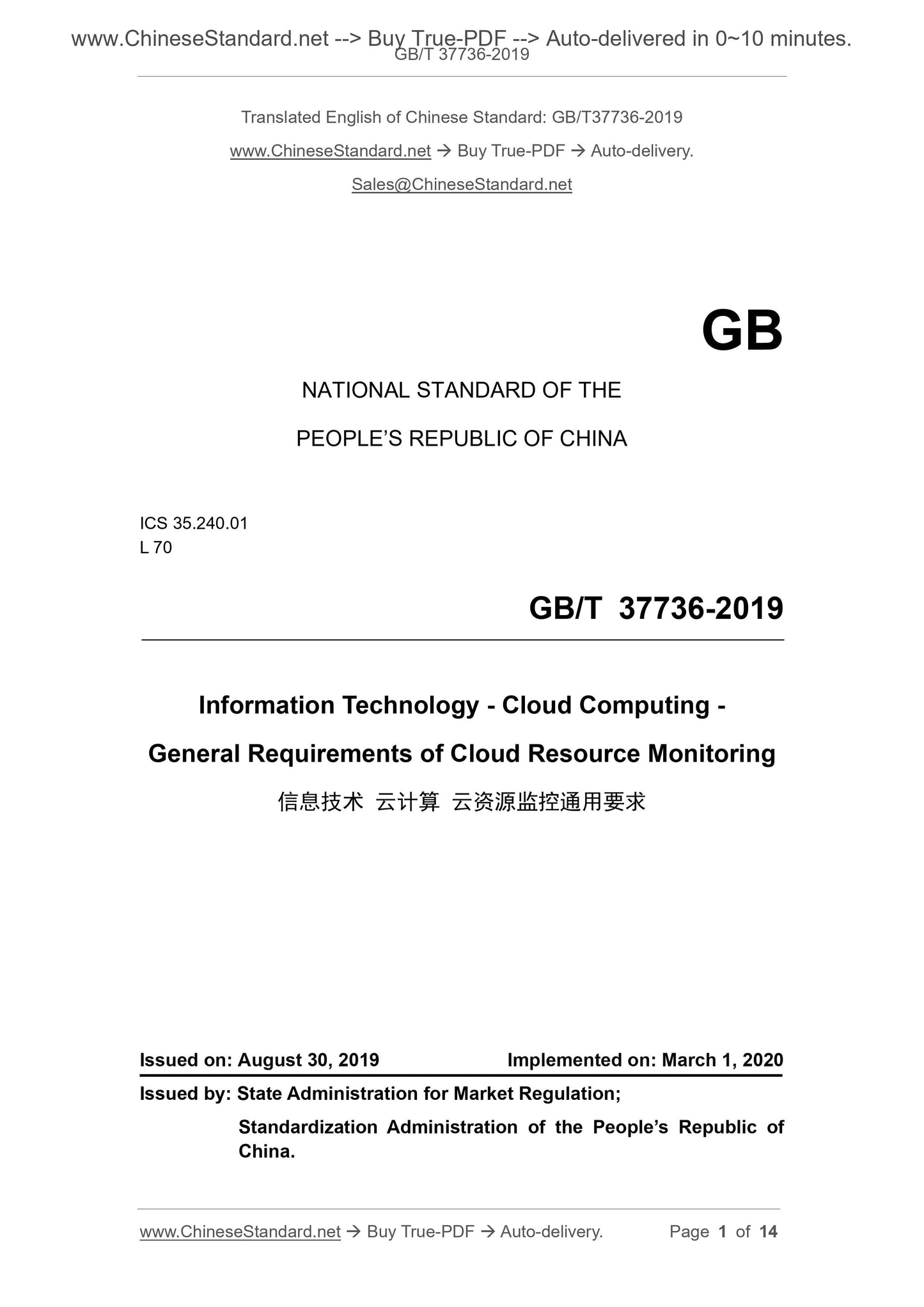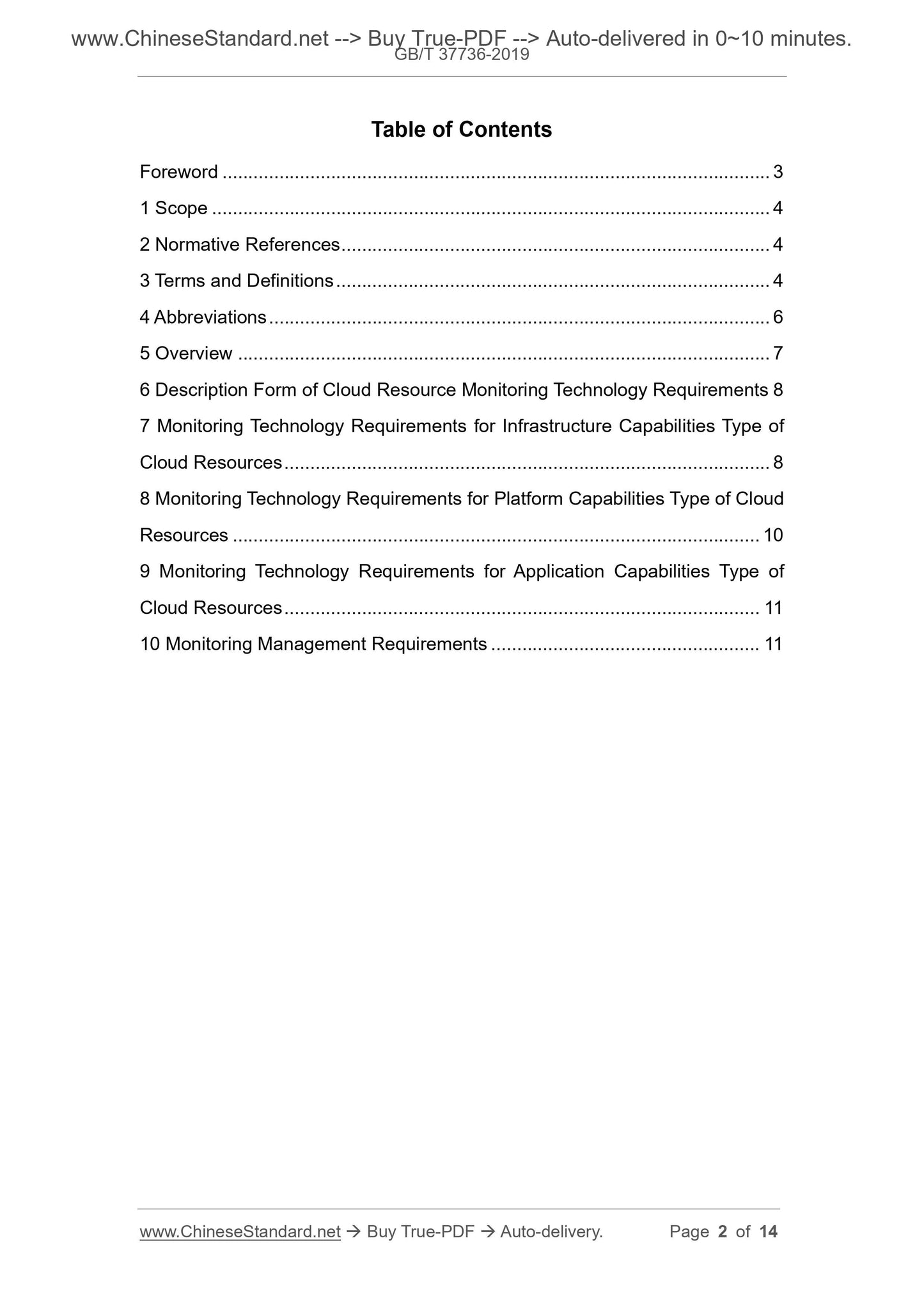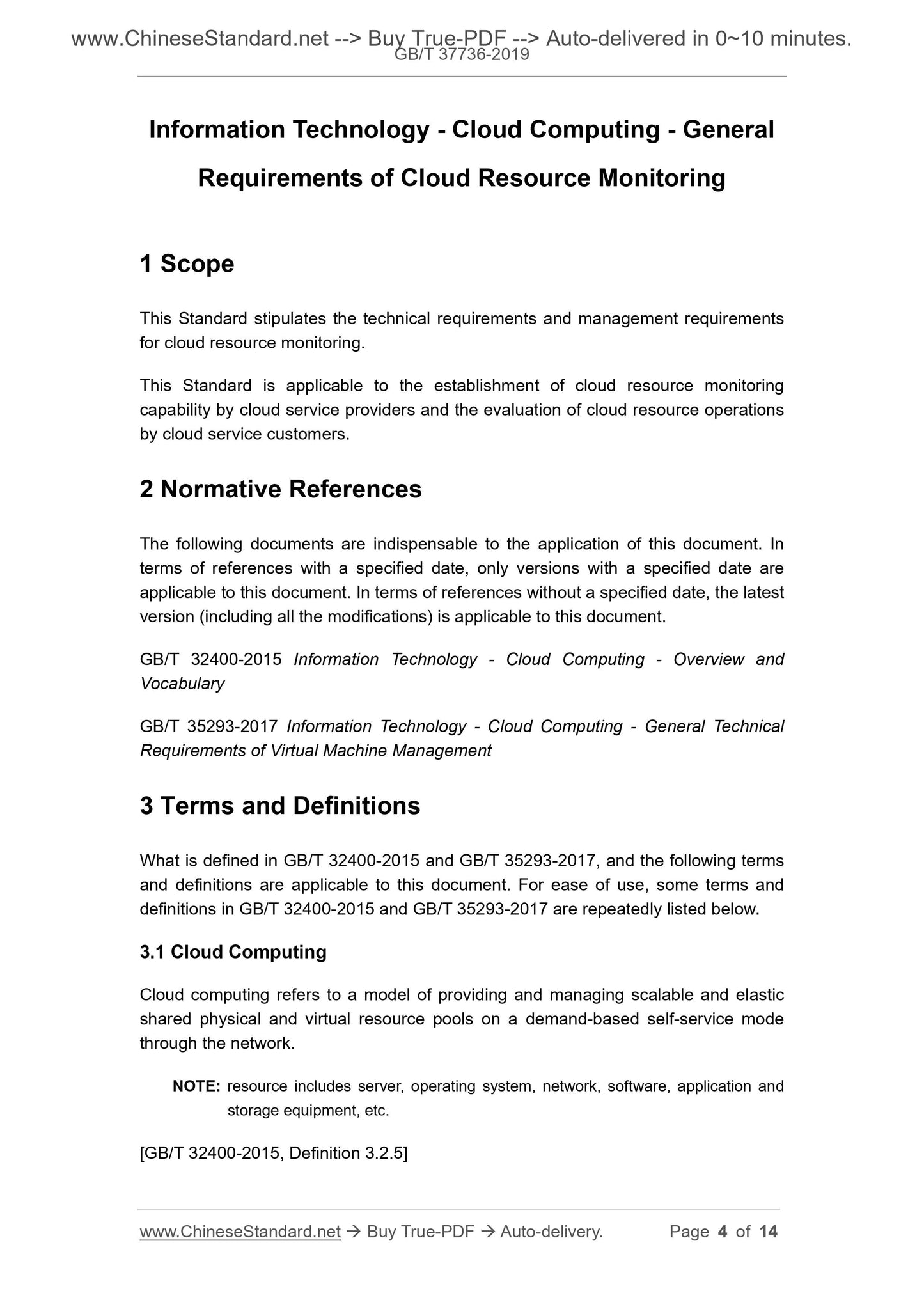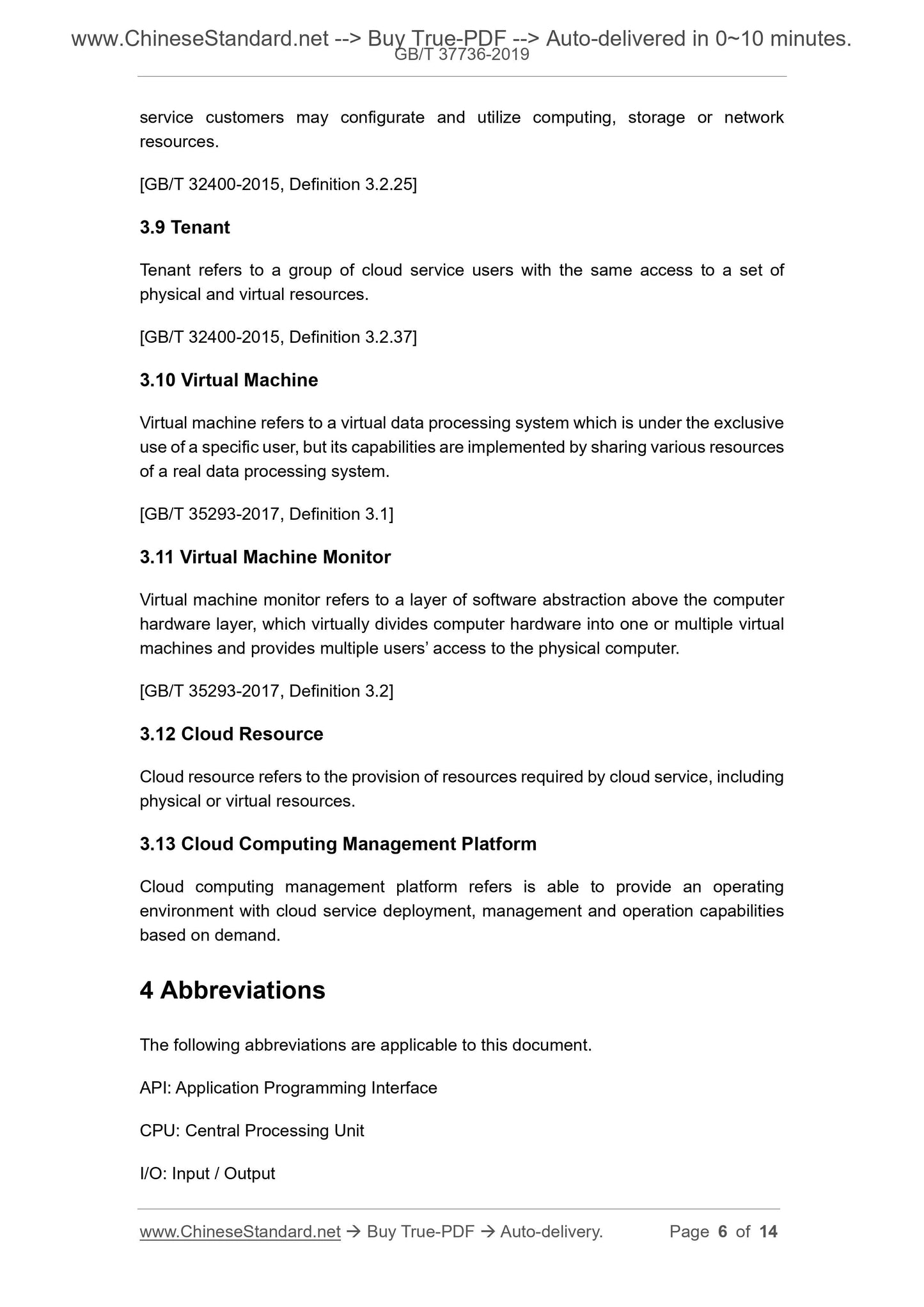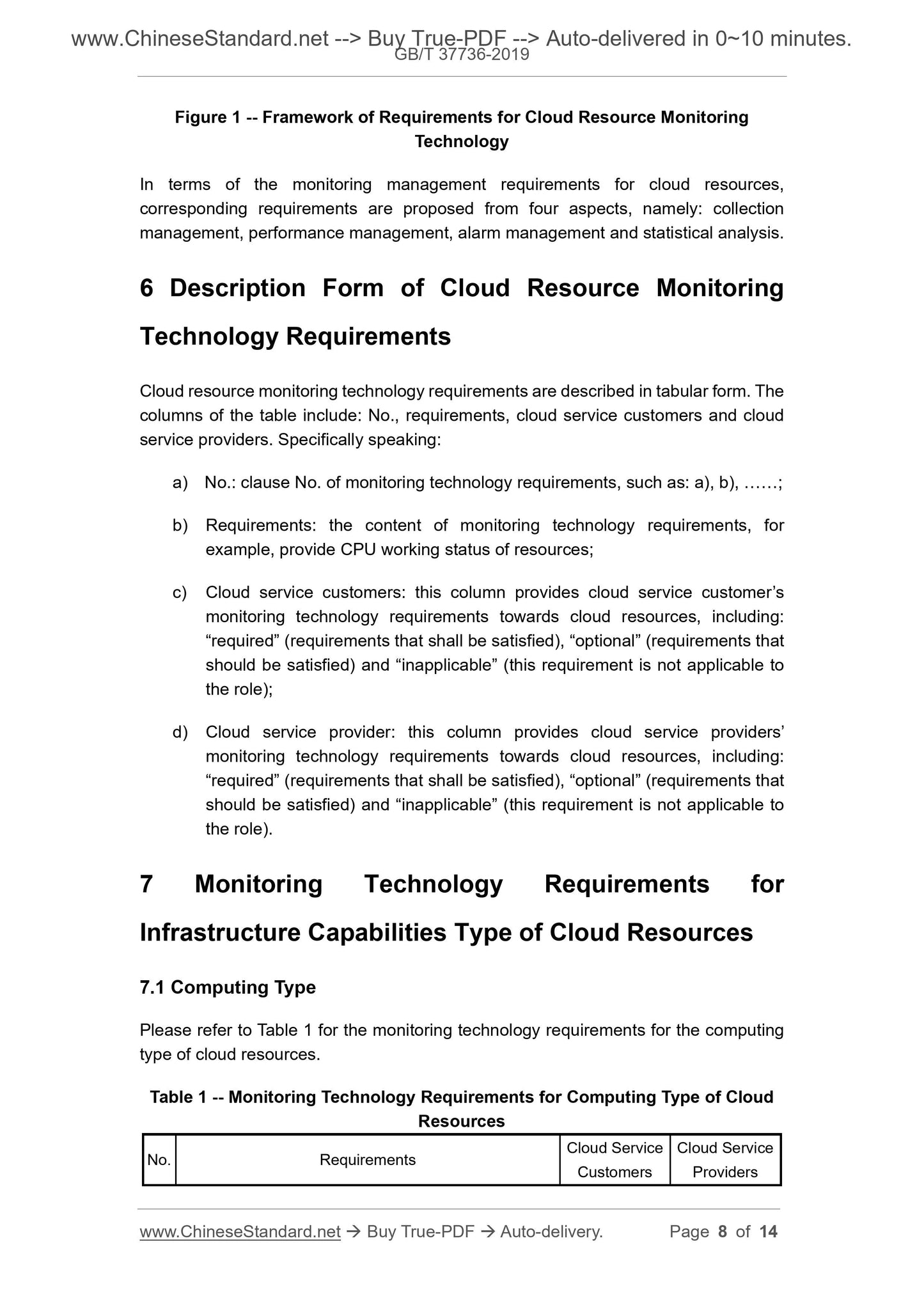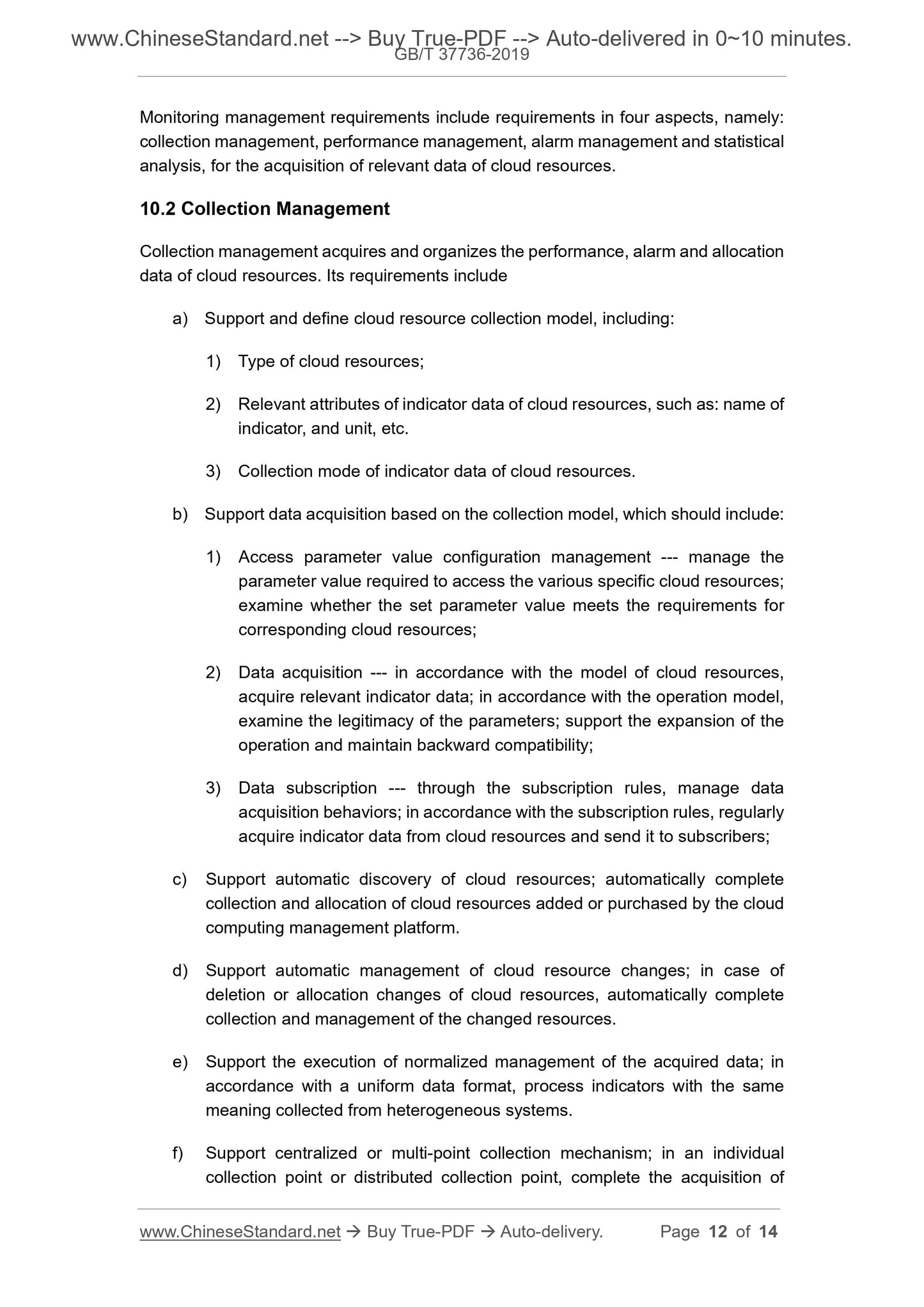1
/
of
6
www.ChineseStandard.us -- Field Test Asia Pte. Ltd.
GB/T 37736-2019 English PDF (GB/T37736-2019)
GB/T 37736-2019 English PDF (GB/T37736-2019)
Regular price
$140.00
Regular price
Sale price
$140.00
Unit price
/
per
Shipping calculated at checkout.
Couldn't load pickup availability
GB/T 37736-2019: Information Technology - Cloud Computing - General Requirements of Cloud Resource Monitoring
Delivery: 9 seconds. Download (and Email) true-PDF + Invoice.Get Quotation: Click GB/T 37736-2019 (Self-service in 1-minute)
Newer / historical versions: GB/T 37736-2019
Preview True-PDF
Scope
This Standard stipulates the technical requirements and management requirementsfor cloud resource monitoring.
This Standard is applicable to the establishment of cloud resource monitoring
capability by cloud service providers and the evaluation of cloud resource operations
by cloud service customers.
Basic Data
| Standard ID | GB/T 37736-2019 (GB/T37736-2019) |
| Description (Translated English) | Information Technology - Cloud Computing - General Requirements of Cloud Resource Monitoring |
| Sector / Industry | National Standard (Recommended) |
| Classification of Chinese Standard | L70 |
| Classification of International Standard | 35.240.01 |
| Word Count Estimation | 10,178 |
| Date of Issue | 2019-08-30 |
| Date of Implementation | 2020-03-01 |
| Issuing agency(ies) | State Administration for Market Regulation, China National Standardization Administration |
Share
